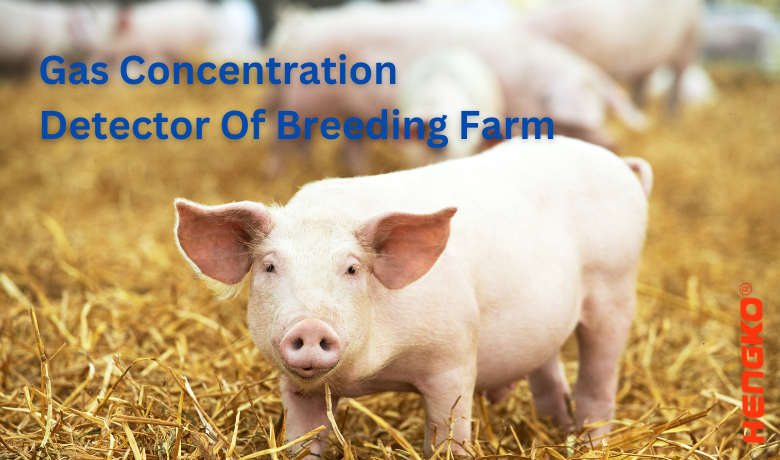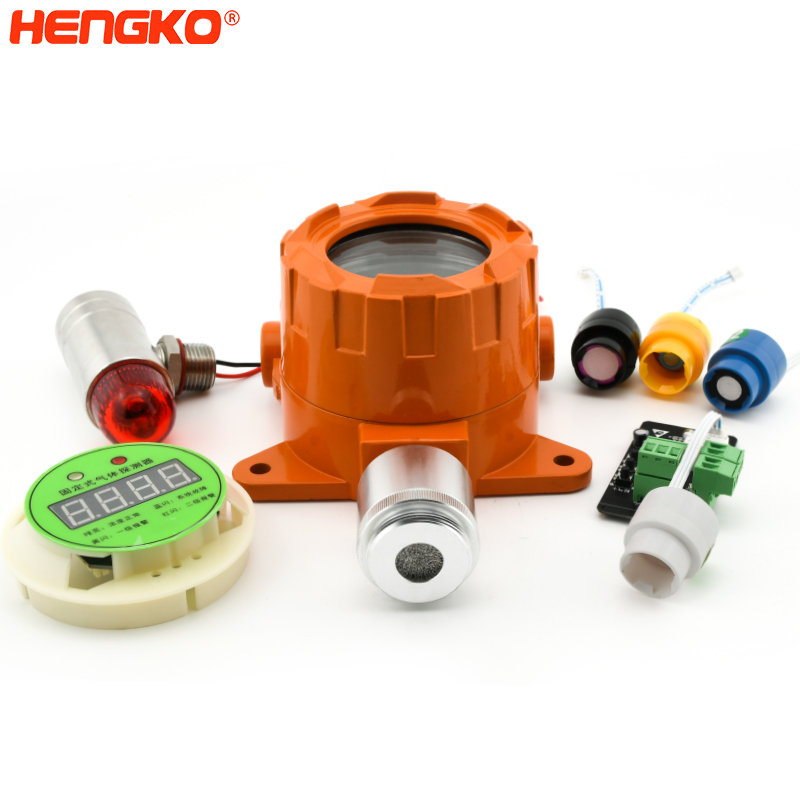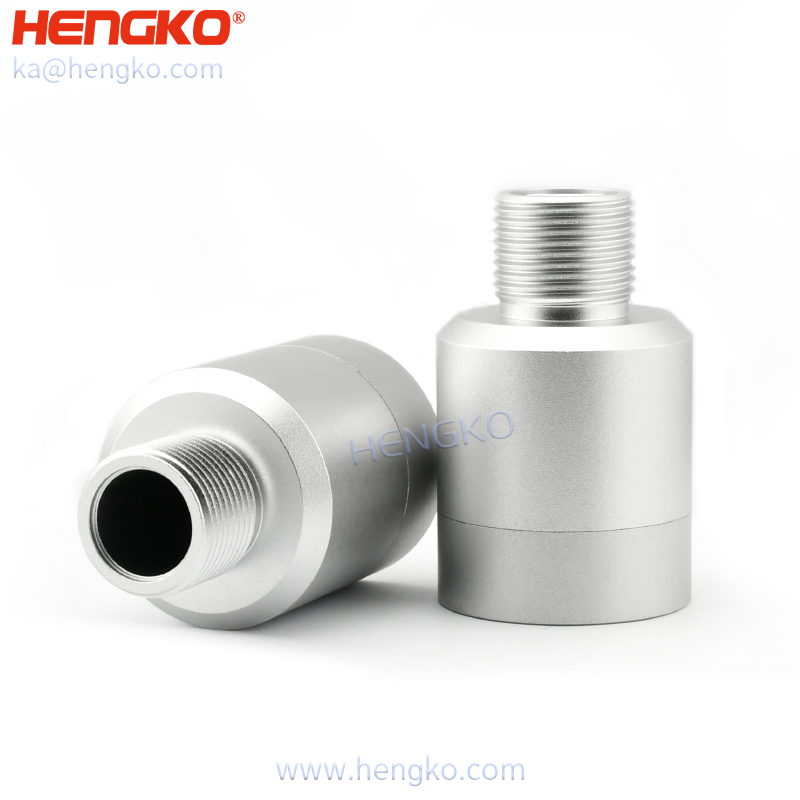Gas Concentration Detector in the Importance of Breeding Farm

Breeding farms play a critical role in meeting the demand for food and other agricultural products. Ensuring a safe and healthy environment within these farms is of utmost importance. One essential tool that aids in maintaining such an environment is the gas concentration detector. In this blog post, we will explore the significance of gas concentration detectors in breeding farms and how they contribute to the overall welfare of animals, humans, and the environment.
Understanding the Risks in Breeding Farms
Breeding farms face various risks associated with gas emissions. Gases such as methane, ammonia, and carbon dioxide can accumulate within the farm environment, posing serious threats to the well-being of animals and humans alike. Methane, a byproduct of animal waste, is a potent greenhouse gas, contributing to climate change. Ammonia, generated from animal urine and manure, can cause respiratory issues in both animals and farm workers. High concentrations of carbon dioxide can lead to suffocation, affecting the health and productivity of livestock. Recognizing these risks necessitates proactive measures to ensure a safe breeding farm environment.
The Role of Gas Concentration Detectors
Gas concentration detectors are specialized devices designed to monitor and detect the presence of harmful gases in the air. These detectors employ various detection methods, including electrochemical sensors, infrared sensors, and catalytic bead sensors, to accurately measure gas concentrations. By continuously monitoring the air quality, these detectors provide real-time data and warnings when gas levels reach hazardous thresholds, enabling prompt action to mitigate potential risks.
Benefits of Gas Concentration Detectors in Breeding Farms
Implementing gas concentration detectors in breeding farms offers several notable benefits:
1. Animal Welfare and Health:
Gas concentration detectors help maintain optimal air quality, ensuring the well-being and health of animals. By monitoring and controlling gas emissions, these detectors contribute to reducing stress and disease transmission among livestock.
2. Preventing Environmental Pollution and Odors:
Gas emissions from breeding farms can result in environmental pollution, impacting surrounding ecosystems. Gas concentration detectors enable early detection and control of emissions, preventing contamination of soil, water, and air. Additionally, they help reduce foul odors, improving the overall environment for farm workers and nearby communities.
3. Enhancing Worker Safety and Productivity:
Breeding farms employ workers who are exposed to potential gas hazards. Gas concentration detectors act as early warning systems, alerting workers to dangerous gas levels, allowing them to take necessary precautions or evacuate if required. Ensuring a safe working environment promotes productivity and reduces the risk of accidents or illnesses.
4. Improving Overall Operational Efficiency:
Gas concentration detectors help optimize farm operations by identifying areas that contribute to excessive gas emissions. By implementing corrective measures, such as improving ventilation or modifying waste management practices, breeding farms can enhance efficiency, reduce costs, and minimize environmental impact.
What Situation of China Face ?
China is the global largest pig producer and pork consumer, with hog production and pork consumption accounting for more than 50% of the global total. By 2020, with the increase of large-scale pig farms and free-range breeding households, the number of breeding sows and live pigs in China will exceed 41 million by the end of November.
Why Are Pig So Important to China?
Compared with chicken, duck, fish, goose, pig is the most important source of meat in the family, in the 21st century, the pork is still the main source of meat protein intake for Chinese people. At the same time live pigs are also an important source of economic, the price of a pig in thousands of yuan, compared with other livestock, pig can be much more than valuable, the livestock is most valuable agricultural and sideline product in China , and its extend production chain involves a wide range of food processing, sausage, feed, slaughtering, catering, and so on.
The middle reaches of the pig breeding industry is the production chain , the already realize scale cultivation breeding , scientific farming, in April 2016, the ministry of agriculture issued《 The national pig production development planning (2016-2020) 》by 2020, the size proportion increase steadily, and become the subject of the pig size field developing standardized scale farming, improve the level of scale farms automation equipment, standardized production level and modern management level. With the large-scale and standardized popularization of the farm, maintaining a scientific and reasonable temperature and humidity environment and air quality, strictly controlling the concentration of ammonia gas, carbon dioxide gas, hydrogen sulfide and other gases, scientific feeding and so on will be conducive to pig breeding, improve the survival rate and yield rate.
In such large-scale industrial pig breeding, the pens are usually relative dense and the number of pigs is large, The daily breathing, excretion, and decomposition of pig feed of pigs in the farm will produce a lot of toxic gases, such as carbon dioxide, NH3, H2S methane, ammonia and so on.
High concentrations of these toxic gases can endanger people's lives and the health of pigs. On April 6, 2018, Fujian He Mou, li Mou some farm workers in the process of pipeline dredge waterways CMC farms to septic tanks, without ventilation and concentration of toxic gas detection, under the condition of not wearing any protective equipment, into the CMC pipeline dredging operations, killing 2 people poisoning of major liability accident.
This accident is mainly caused by the operator's lack of safety awareness and the absence of toxic gas detector in the farm and pipeline. Therefore, it is very important to install toxic gas concentration detector in the farm.
Installation and Maintenance of Gas Concentration Detectors
Installing gas concentration detectors in breeding farms involves a few essential steps:
1. Identify Critical Areas: Determine the areas within the farm where gas concentration detectors should be placed based on potential gas emission sources and animal occupancy.
2. Calibration and Configuration: Calibrate the detectors to ensure accurate measurements and configure them to provide timely alerts and notifications.
3. Regular Maintenance: Conduct routine maintenance and inspections to verify the proper functioning of detectors, including sensor cleaning, battery checks, and software updates.
By adhering to proper installation and maintenance practices, breeding farms can maximize the effectiveness of gas concentration detectors and ensure a reliable monitoring system.
What HENGKO Can Do For the Gas Concentration Detector of Breeding Farm
HENGKO's Gas Concentration Detector offers several advantages that make it a reliable and effective solution for gas detection applications.
Here are some key advantages:
1. High Sensitivity: HENGKO's Gas Concentration Detector is designed to detect even low levels of gas concentrations accurately. It utilizes advanced sensing technology to ensure sensitivity and reliability in gas detection.
2. Wide Range of Gas Detection: The detector is capable of detecting a wide range of gases, including but not limited to carbon dioxide (CO2), carbon monoxide (CO), oxygen (O2), ammonia (NH3), methane (CH4), and various volatile organic compounds (VOCs). This versatility makes it suitable for various industries and applications.
3. Fast Response Time: HENGKO's Gas Concentration Detector offers a quick response time, enabling timely detection of gas leaks or hazardous gas concentrations. This feature is crucial in ensuring the safety of personnel and preventing potential accidents.
4. Robust Construction: The detector is built with high-quality materials and features a rugged construction, making it suitable for use in demanding environments. It can withstand harsh conditions and temperature variations, ensuring long-lasting performance and durability.
5. Easy Installation and Operation: HENGKO's Gas Concentration Detector is designed for easy installation and user-friendly operation. It can be integrated into existing systems or used as a standalone device, providing convenience and flexibility.
HENGKO Fixed toxic gas concentration detector, the product adopts modular design, with intelligent sensor detection technology, the overall flameproof, using wall type installation.
Used for continuous on-line monitoring of gas concentration in all kinds of bad situations.
Display the current concentration on the screen, and alarm when the concentration reaches the preset alarm value.
 We can install a fixed gas concentration detector in the piggery and test it regularly. In the pipeline operation, the handheld pipeline gas concentration detector can be used, convenient, real-time detection, rapid response, to ensure safe operation and ensure life safety.
We can install a fixed gas concentration detector in the piggery and test it regularly. In the pipeline operation, the handheld pipeline gas concentration detector can be used, convenient, real-time detection, rapid response, to ensure safe operation and ensure life safety.
And there are many types of explosion-proof housing optional: stainless steel explosion-proof housing (powder/stainless steel mesh);
Aluminum explosion-proof housing (powder), you can choose different filtration precision gas probe housing (gas chamber) according to your actual needs.

Future Developments and Trends
As technology continues to advance, the field of gas detection is evolving as well. New developments and trends are emerging to further enhance the capabilities of gas concentration detectors in breeding farms. Some notable advancements include:
1. Wireless Connectivity: Integration of wireless connectivity enables remote monitoring of gas concentrations, providing real-time data and alerts to farmers and farm managers via mobile devices or centralized control systems.
2. Data Analytics and Machine Learning: Incorporating data analytics and machine learning algorithms into gas concentration detectors allows for more sophisticated analysis of gas patterns and trends. This can help identify potential risks and optimize farm operations based on historical data.
3. IoT Integration: Integration with the Internet of Things (IoT) enables seamless communication between gas concentration detectors and other farm management systems, such as ventilation controls or environmental monitoring systems. This integration improves overall farm automation and coordination.
4. Improved Sensor Technology: Ongoing advancements in sensor technology continue to enhance the accuracy and sensitivity of gas concentration detectors. This ensures more precise measurements and early detection of even trace amounts of hazardous gases.
To experience the benefits of HENGKO's Gas Concentration Detector and enhance gas safety in your facility, Contact Us Today for more information or to request a demonstration.
Ensure the well-being of your workforce and protect your premises from potential gas hazards with HENGKO's reliable and advanced gas detection technology.

